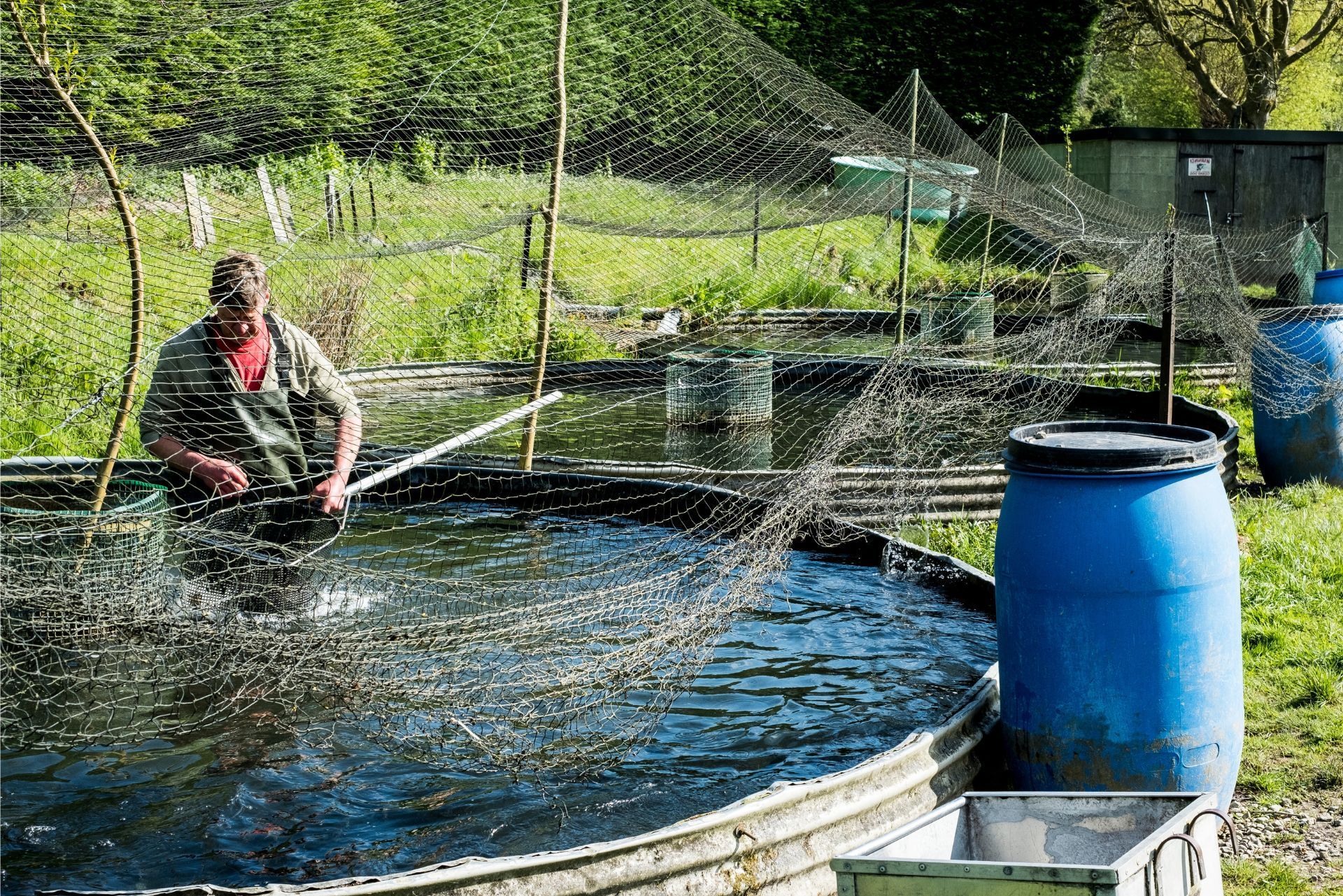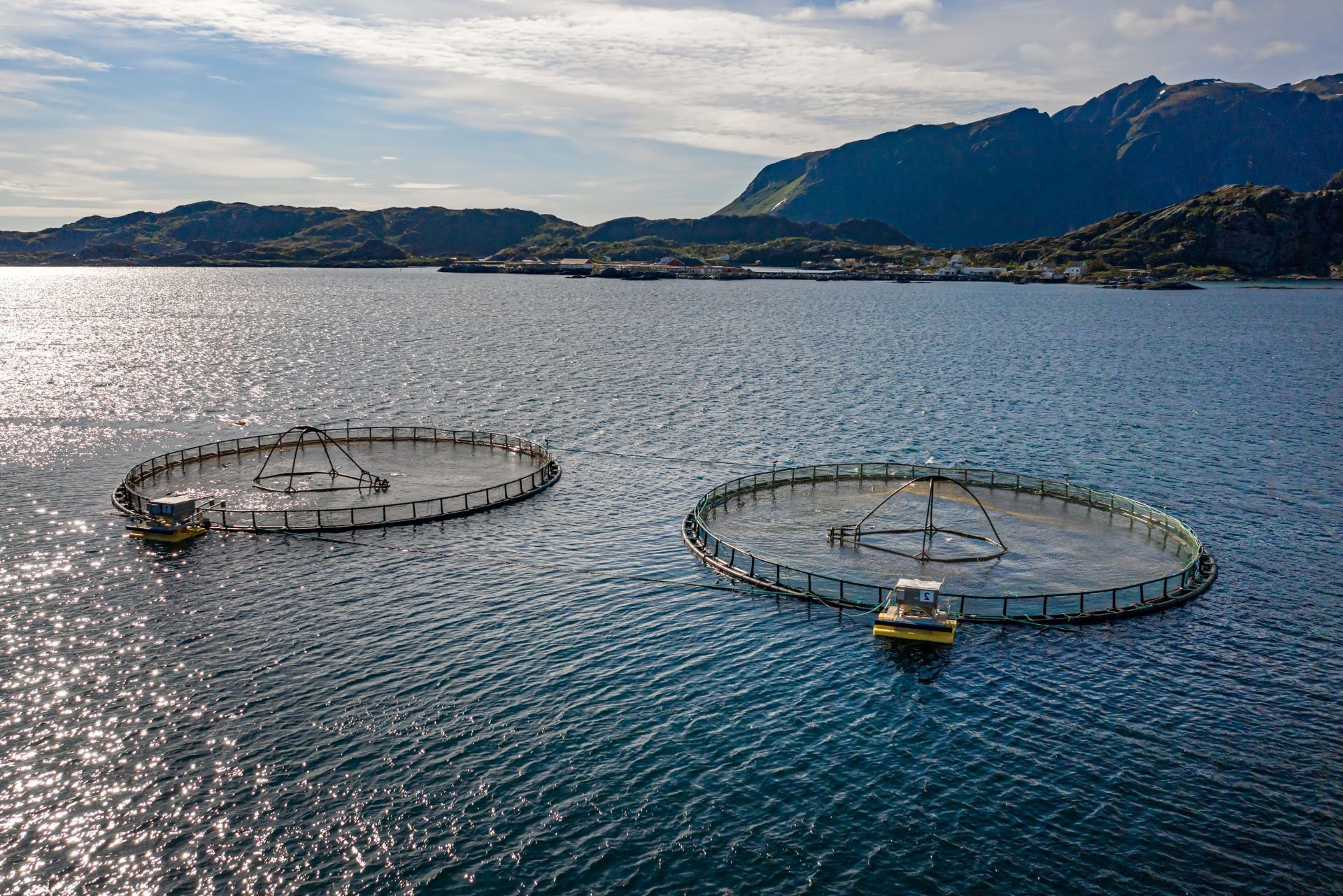Top 3 Recommended Business Policies
Index
Understanding the Maryland Aquaculture Industry
Risks Facing Maryland Aquaculture Farms
Types of Aquaculture Insurance Coverage in Maryland
Maryland-Specific Considerations for Aquaculture Insurance
Tips for Securing Comprehensive Aquaculture Insurance
Case Studies: Maryland Aquaculture Insurance in Action
Contact Us
Aquaculture, the farming of aquatic organisms such as fish, shellfish, and plants, is a vital and growing sector in Maryland’s economy. With the Chesapeake Bay and its tributaries providing an ideal environment for aquaculture, Maryland has become a hub for oyster farming, fish hatcheries, and seaweed cultivation. However, like any agricultural enterprise, aquaculture operations face unique risks that can threaten their viability. This is where aquaculture insurance plays a critical role.
This comprehensive guide covers everything you need to know about Maryland aquaculture insurance, from understanding the specific risks involved to the types of coverage available, regulatory considerations, and tips for securing the best policy. Whether you are a seasoned aquaculture farmer or considering entering this industry, understanding insurance options is essential for protecting your investment and ensuring long-term success.
Understanding the Maryland Aquaculture Industry
The Importance of Aquaculture in Maryland
Maryland’s aquaculture industry is a significant contributor to the state’s economy and environmental stewardship. According to the Maryland Department of Natural Resources (DNR), the state’s aquaculture sector generates over $60 million annually and supports thousands of jobs. Oyster farming, in particular, is a cornerstone of this industry, with Maryland ranking among the top oyster producers in the United States. This thriving sector not only provides livelihoods for local communities but also plays a vital role in maintaining the cultural heritage of the region, where seafood has long been a staple of the local diet.
Beyond economic benefits, aquaculture helps restore the Chesapeake Bay ecosystem by improving water quality and providing habitat for marine life. Oysters, for example, are known as nature's water filters, capable of filtering up to 50 gallons of water per day, which contributes to clearer waters and healthier aquatic habitats. As demand for sustainable seafood grows, Maryland’s aquaculture farms are well-positioned to expand, making insurance protection more critical than ever. The industry is also adapting to climate change challenges, exploring innovative practices that enhance resilience and sustainability, ensuring that the benefits of aquaculture can be enjoyed for generations to come.
Common Aquaculture Practices in Maryland
Maryland’s aquaculture operations vary widely, including:
- Oyster Farming: The most prominent form of aquaculture in Maryland, involving techniques such as bottom culture, off-bottom cages, and floating bags. These methods not only maximize yield but also minimize environmental impact, allowing farmers to cultivate oysters in harmony with the surrounding ecosystem.
- Fish Farming: Raising species like striped bass, catfish, and trout in controlled environments such as ponds or tanks. This practice helps alleviate pressure on wild fish populations and provides a consistent supply of high-quality seafood.
- Shellfish Cultivation: Including clams and mussels, often grown in coastal waters or estuaries. These shellfish are not only delicious but also play a crucial role in nutrient cycling within their environments.
- Seaweed Farming: An emerging sector focusing on sustainable seaweed production for food, biofuel, and other uses. Seaweed farming is gaining traction due to its low environmental footprint and potential for carbon sequestration, making it an exciting area of growth within the aquaculture industry.
Each type of aquaculture operation faces unique environmental and operational risks, which influence the type of insurance coverage needed. For instance, oyster farms must contend with fluctuating salinity levels and water temperatures, while fish farms need to manage disease outbreaks and feed supply issues. As the industry evolves, farmers are increasingly turning to technology, such as automated monitoring systems and data analytics, to mitigate these risks and enhance productivity. These advancements not only improve operational efficiency but also contribute to the overall sustainability of Maryland's aquaculture practices, ensuring that the industry can thrive in an ever-changing environment.

Risks Facing Maryland Aquaculture Farms
Environmental and Natural Risks
Aquaculture farms in Maryland are exposed to a variety of environmental risks that can cause significant financial losses. Severe weather events such as hurricanes, storms, and flooding are common threats, especially given Maryland’s coastal location. For example, Hurricane Isabel in 2003 caused extensive damage to oyster reefs and aquaculture infrastructure. The aftermath of such storms often requires months of recovery, during which farms may face prolonged periods of reduced productivity and income.
Water quality fluctuations, including changes in salinity, temperature, and pollution levels, can also impact the health and growth of aquatic species. Additionally, diseases and parasites pose ongoing challenges, with outbreaks potentially wiping out entire stocks. The introduction of invasive species, often exacerbated by climate change, further complicates the ecosystem, leading to competition for resources and the potential collapse of local fish populations. Farmers must remain vigilant, employing monitoring systems and adaptive management strategies to mitigate these risks effectively.
Operational and Market Risks
Beyond natural hazards, aquaculture operations face operational risks such as equipment failure, theft, and human error. The specialized nature of aquaculture equipment—like aerators, pumps, and cages—means repairs or replacements can be costly and time-consuming. Regular maintenance is essential, but it can be overlooked during peak production periods, leading to unexpected downtimes that can significantly affect harvest schedules.
Market risks include price volatility, changes in consumer demand, and competition from imported seafood. Regulatory changes can also impact operations, requiring farms to adapt quickly to new standards or restrictions. For instance, shifts in consumer preferences towards sustainable and locally sourced seafood can create opportunities, but they also necessitate adjustments in farming practices and marketing strategies. As consumers become more educated about the environmental impacts of their food choices, aquaculture farms must be proactive in demonstrating their commitment to sustainability and responsible practices to remain competitive.
Legal and Liability Risks
Aquaculture farms must navigate complex legal landscapes, including water rights, environmental regulations, and zoning laws. Liability risks arise if farm operations inadvertently harm neighboring properties, wildlife, or public waterways. For instance, a farm owner could be held responsible for contamination or damage caused by escaped fish or chemical use. This legal exposure can lead to costly litigation and damage to the farm's reputation, which is particularly detrimental in a market that relies heavily on consumer trust.
Insurance policies that include liability coverage help protect against lawsuits and claims, safeguarding the farm’s financial stability. However, navigating the intricacies of insurance can be daunting, and many farmers may not fully understand the extent of their coverage or the specific risks they face. Engaging with legal experts and insurance professionals can provide valuable insights, helping farm owners to tailor their policies effectively and ensure they are adequately protected against potential liabilities. Furthermore, establishing strong community relations and transparent operational practices can also serve as a buffer against legal challenges, fostering goodwill and understanding with local stakeholders.
Types of Aquaculture Insurance Coverage in Maryland
Property and Equipment Insurance
This coverage protects the physical assets of an aquaculture operation, including buildings, tanks, cages, boats, and machinery. Property insurance typically covers damage caused by fire, storms, theft, and vandalism. Given the high cost of specialized equipment, this coverage is essential for maintaining operational continuity after unexpected events. Additionally, many aquaculture operations rely on advanced technology for monitoring water quality and feeding systems, making it crucial to ensure that these technological assets are also included in the coverage. Regular assessments of property values and equipment conditions can help operators adjust their policies to reflect current replacement costs, ensuring they are adequately protected.
Crop and Stock Insurance
Also known as aquaculture production insurance, this type of coverage protects the aquatic stock—such as fish, oysters, or shellfish—from losses due to disease, mortality, adverse weather, or water quality issues. Unlike traditional crop insurance for terrestrial agriculture, aquaculture stock insurance must account for the unique biology and environment of aquatic species. This insurance is particularly vital in Maryland, where the Chesapeake Bay's fluctuating conditions can pose significant risks to aquatic life. Maryland farmers can explore options through private insurers or federal programs like the USDA’s Non-Insured Crop Disaster Assistance Program (NAP), which may offer some protection for aquaculture products. Furthermore, understanding the specific risks associated with different species can help operators select the most suitable coverage and enhance their overall risk management strategies.
Liability Insurance
Liability coverage shields aquaculture operators from claims arising from bodily injury, property damage, or environmental harm caused by their operations. This includes coverage for legal defense costs, settlements, or judgments. Given the potential for environmental impact, liability insurance is a critical component of a comprehensive aquaculture insurance plan. Operators should also consider the implications of their practices on local ecosystems and communities, as these factors can influence liability claims. Engaging in best management practices not only helps mitigate risks but can also lead to lower premiums, as insurers may view proactive measures favorably.
Business Interruption Insurance
Business interruption insurance compensates for lost income and ongoing expenses if an aquaculture operation must halt due to covered events such as natural disasters or equipment failure. This coverage helps farms manage cash flow during recovery periods and avoid permanent closure. It is essential for operators to maintain accurate financial records and projections, as insurers often require this information to determine the appropriate coverage limits. Additionally, diversifying income streams, such as offering tours or educational programs, can provide a buffer against interruptions, ensuring that the business remains viable even during challenging times.
Pollution Liability Insurance
Because aquaculture farms interact closely with natural water bodies, pollution liability insurance can provide protection against claims related to contamination or environmental damage. This is particularly important for farms using chemicals, antibiotics, or feed additives that could affect water quality. As regulations around environmental protection become more stringent, having this type of insurance can safeguard operators against potential legal repercussions and cleanup costs. Moreover, implementing sustainable practices, such as integrated pest management and organic feed options, can not only reduce the risk of pollution but also enhance the farm's reputation and marketability in an increasingly eco-conscious consumer landscape.
Maryland-Specific Considerations for Aquaculture Insurance
State Regulations and Licensing
Maryland aquaculture operators must comply with state regulations administered by the Maryland Department of Natural Resources (DNR) and other agencies. These regulations cover licensing, water use permits, environmental standards, and reporting requirements. Insurance providers often require proof of compliance as a condition of coverage.
Understanding these regulatory frameworks is essential for selecting appropriate insurance policies and avoiding coverage gaps. For instance, the DNR has specific guidelines regarding the sustainable harvesting of aquatic species, which can directly impact the viability of an aquaculture operation. Operators should be aware of seasonal restrictions and quotas that may apply to their specific species, as these can influence both operational planning and insurance needs. Additionally, staying informed about changes in legislation or new environmental policies can help operators maintain compliance and secure necessary permits without interruption.
Federal Assistance and Programs
The USDA offers limited insurance programs tailored to aquaculture, though coverage options are less extensive than for traditional crops. The Non-Insured Crop Disaster Assistance Program (NAP) provides some financial assistance for losses caused by natural disasters when no other insurance is available.
Maryland farmers should also explore grants and technical assistance programs offered by state and federal agencies to improve risk management and resilience. Programs such as the Aquaculture Research Program and the Maryland Agricultural Cost Share Program can provide valuable resources for operators looking to enhance their practices. These initiatives often focus on sustainable aquaculture techniques, which not only promote environmental stewardship but can also lead to improved marketability of products. Furthermore, participation in these programs may enhance an operator’s eligibility for certain types of insurance coverage, as insurers often favor businesses that demonstrate a commitment to sustainable practices.
Choosing the Right Insurance Provider
Not all insurance companies offer specialized aquaculture coverage, so it is important to work with insurers who understand the unique risks of the industry. Local providers with experience in Maryland’s aquaculture sector can offer tailored policies and better customer support.
Farmers should compare quotes, review policy terms carefully, and consider working with insurance brokers who specialize in agricultural or aquaculture insurance. Engaging with brokers who have a deep understanding of the local market can provide insights into which insurance products best suit specific operational needs. Additionally, networking with other aquaculture operators can yield recommendations for reliable insurance providers and share experiences regarding claims processes. This collaborative approach can help operators make informed decisions, ensuring they select coverage that not only protects their investments but also aligns with their long-term business goals.

Tips for Securing Comprehensive Aquaculture Insurance
Conduct a Thorough Risk Assessment
Before purchasing insurance, aquaculture operators should evaluate their specific risks, including environmental factors, operational vulnerabilities, and market conditions. This assessment helps identify coverage needs and prioritize protections.
Maintain Detailed Records and Documentation
Accurate records of stock inventories, equipment, maintenance, and compliance with regulations are crucial for insurance underwriting and claims processing. Keeping detailed logs can streamline claims and demonstrate responsible farm management.
Invest in Risk Mitigation Practices
Implementing best practices such as water quality monitoring, biosecurity measures, and infrastructure maintenance can reduce the likelihood of losses and may lower insurance premiums. Insurers often reward proactive risk management.
Review and Update Policies Regularly
Aquaculture operations evolve over time, and insurance needs may change accordingly. Regularly reviewing policies ensures continued adequate coverage and helps identify new risks or opportunities for savings.
Case Studies: Maryland Aquaculture Insurance in Action
Oyster Farm Recovery After Storm Damage
In 2018, a severe storm caused extensive damage to a Maryland oyster farm’s cages and stock. Thanks to comprehensive property and stock insurance, the farm was able to replace damaged equipment and restock oysters within months, minimizing long-term financial losses.
Fish Hatchery Liability Coverage Prevents Financial Ruin
A Maryland fish hatchery faced a lawsuit after an accidental chemical spill affected a neighboring property. Their liability insurance covered legal fees and damages, allowing the hatchery to continue operations without catastrophic financial impact.
The Future of Aquaculture Insurance in Maryland
As Maryland’s aquaculture industry grows and diversifies, insurance products are expected to evolve to better meet farmers’ needs. Advances in technology, such as remote monitoring and data analytics, may improve risk assessment and enable more customized policies.
Additionally, increasing awareness of climate change impacts will likely drive demand for insurance solutions that address emerging environmental risks. Collaboration between insurers, government agencies, and aquaculture stakeholders will be key to developing sustainable risk management frameworks.
Conclusion
Maryland’s aquaculture industry offers exciting opportunities but also faces complex risks that require careful management. Aquaculture insurance is an indispensable tool for protecting farms against environmental, operational, and legal challenges. By understanding the types of coverage available, complying with state regulations, and adopting proactive risk management strategies, Maryland aquaculture operators can safeguard their investments and contribute to the sustainable growth of this vital sector.
For those involved in Maryland aquaculture, investing time and resources into securing the right insurance coverage is not just prudent—it’s essential for long-term success and resilience in a dynamic and sometimes unpredictable industry.

